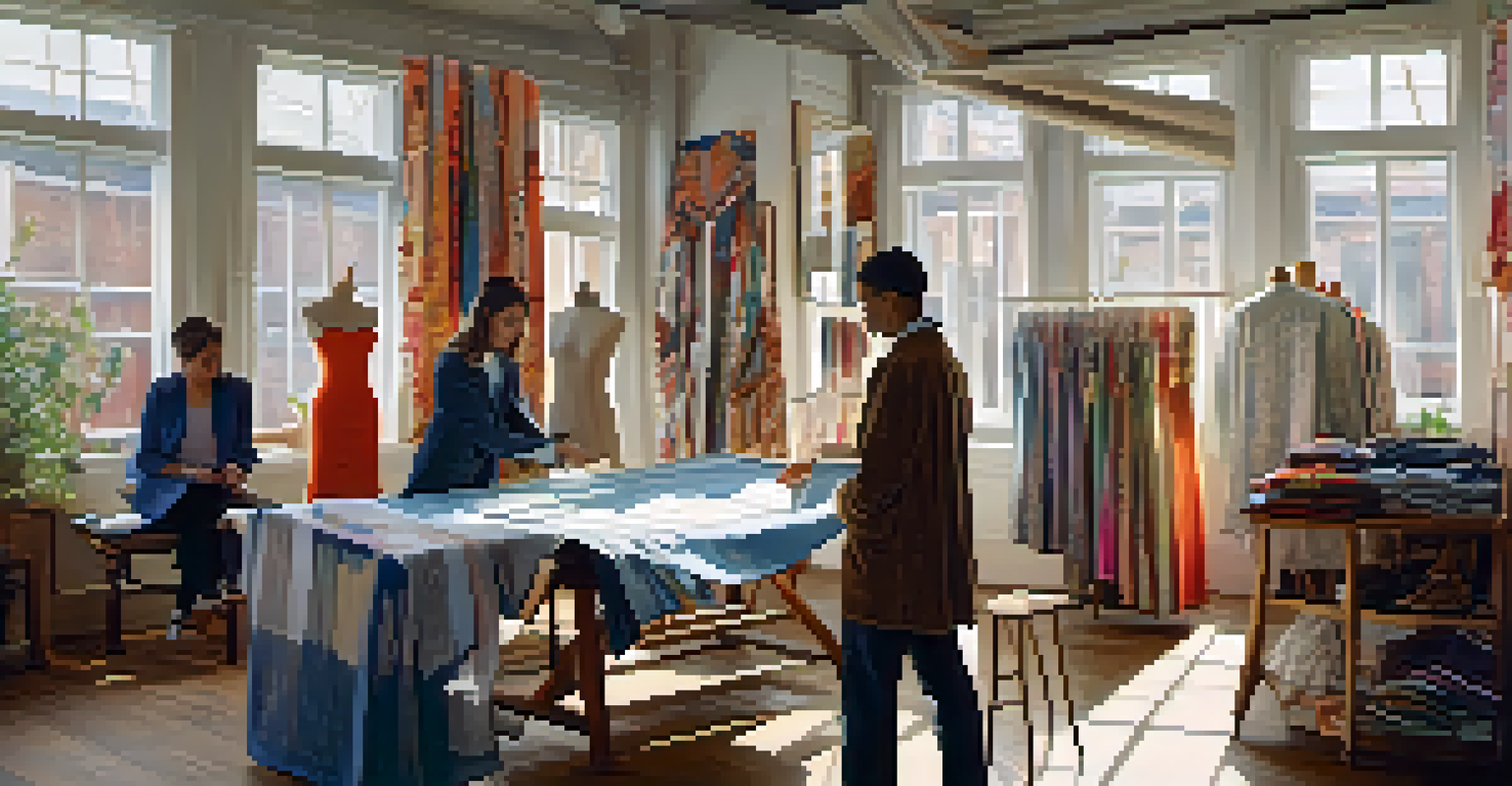From Mass Production to Personalization: Fashion's New Era

Understanding Mass Production in Fashion History
Mass production revolutionized the fashion industry in the 20th century, enabling brands to create large quantities of clothing quickly and efficiently. This approach made fashion more accessible to the general public, allowing people to buy trendy items at affordable prices. However, while it democratized fashion, it often sacrificed quality and individuality in the process.
Fashion is the armor to survive the reality of everyday life.
With clothing produced in bulk, consumers found themselves wearing the same styles as their neighbors, leading to a sense of monotony in personal expression. As a result, the desire for unique, high-quality garments began to grow. This craving laid the groundwork for the next evolution in fashion: personalization.
Understanding this shift is crucial, as it highlights how consumer preferences have evolved over time. As we look back, we can see how mass production, while beneficial in many ways, sparked a yearning for something more tailored and personal.
The Rise of Personalization in Fashion
Personalization in fashion is more than just a trend; it’s a response to the demands of modern consumers who seek unique experiences. Brands are now using data analytics to understand individual preferences and tailor products accordingly. This means that consumers can enjoy a more curated shopping experience, where items resonate with their personal style.

From made-to-measure suits to customizable sneakers, the personalization trend is reshaping how we think about our wardrobes. Shoppers now have the option to design pieces that reflect their identity, moving away from the one-size-fits-all mentality. This shift not only enhances customer satisfaction but also fosters a deeper connection between consumers and brands.
Mass Production's Impact on Fashion
Mass production made fashion accessible but often compromised quality and individuality.
As personalization becomes the norm, it's transforming the marketplace, prompting brands to innovate continuously. This evolution speaks to a broader cultural shift where individuality is celebrated and consumers are empowered to express themselves through their fashion choices.
Technology's Role in Fashion Personalization
Technology plays a pivotal role in the personalization of fashion, driving innovation and changing consumer expectations. With advancements in artificial intelligence and machine learning, brands can analyze consumer data to predict trends and preferences accurately. This allows for a more seamless shopping experience, where recommendations feel almost intuitive.
Style is a way to say who you are without having to speak.
3D printing technology is also making waves, enabling the production of custom-designed items without the constraints of traditional manufacturing. Imagine being able to wear a piece that’s not only stylish but also made specifically for you! This level of customization is becoming increasingly feasible, leading to a new standard in fashion.
Moreover, augmented reality (AR) is enhancing the personalization experience, allowing customers to virtually try on clothes before making a purchase. This technology reduces the guesswork associated with online shopping, making it easier for consumers to find pieces that truly fit their style and body.
Sustainability Meets Personalization in Fashion
As the fashion industry embraces personalization, sustainability is becoming a critical focus. Consumers are increasingly aware of the environmental impact of fast fashion and are seeking out brands that prioritize eco-friendly practices. Personalized fashion often leads to more thoughtful purchases, reducing waste and promoting sustainable consumption.
By focusing on made-to-order items or limited runs, brands can minimize overproduction and the associated environmental costs. This not only aligns with consumer values but also encourages a more mindful approach to fashion consumption. It’s a win-win for both the planet and the individual.
Personalization Reshapes Consumer Choices
The rise of personalization allows consumers to enjoy unique, tailored fashion experiences that reflect their identities.
Sustainability and personalization are proving to be complementary forces in the industry. As consumers demand not just style but also ethical practices, brands that successfully merge these two elements are likely to thrive in this new era of fashion.
The Impact of Social Media on Fashion Personalization
Social media has significantly influenced how fashion brands approach personalization. Platforms like Instagram and TikTok allow brands to engage directly with consumers, offering a glimpse into their preferences and lifestyle choices. This interaction helps brands create tailored marketing strategies that resonate with their audience.
Moreover, influencers and user-generated content are driving trends, demonstrating the importance of individuality in fashion. Consumers are inspired by real people, not just models, leading to a greater desire for unique pieces that reflect personal style. This shift encourages brands to move away from cookie-cutter designs and embrace creativity.
As social media continues to evolve, it will undoubtedly shape the future of fashion personalization. The direct feedback loop between consumers and brands fosters innovation, making personalized fashion not just a possibility, but a necessity in today’s digital landscape.
Challenges of Implementing Personalization in Fashion
While the shift towards personalization offers exciting opportunities, it also presents challenges for the fashion industry. One major hurdle is the balance between customization and scalability; brands must find a way to offer personalized options without overwhelming production capabilities. This challenge requires innovative thinking and efficient processes.
Additionally, the reliance on consumer data raises privacy concerns. As brands collect more information to tailor their offerings, they must navigate the fine line between personalization and privacy invasion. Transparency and trust will be key factors in maintaining a positive consumer relationship.
Sustainability and Personalization Unite
As fashion embraces personalization, sustainability becomes a key focus, promoting eco-friendly practices and thoughtful consumption.
Ultimately, overcoming these challenges will require collaboration and creativity within the industry. As brands adapt and innovate, they will pave the way for a fashion landscape that embraces both personalization and responsible practices.
The Future of Fashion: Embracing Personalization
Looking ahead, the future of fashion appears bright as personalization takes center stage. Consumers are no longer passive participants; they are active contributors to the fashion narrative. This shift empowers them to express their individuality and engage with brands on a deeper level, fostering loyalty and connection.
As technology continues to evolve, we can expect even more sophisticated personalization techniques that cater to individual tastes and preferences. From AI-generated designs to sustainable practices, the possibilities are endless. This evolution will likely redefine the relationship between consumers and fashion, creating a more dynamic and inclusive environment.

Ultimately, embracing personalization is not just about keeping up with trends; it’s about acknowledging that every person has a unique story to tell through their fashion choices. As we move into this new era, the industry must prioritize creativity, innovation, and sustainability, ensuring that fashion remains a vibrant form of self-expression.